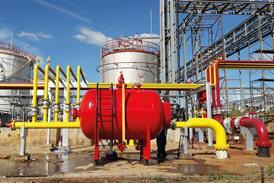- News

All the latest updates on building safety reformRegulations latest
- Focus
- Comment
- Programmes
- CPD
- Building the Future
- Jobs
- Data
- Subscribe
- Events

2024 events calendar
Explore now
Building Awards
Keep up to date
- Building Boardroom
Building the Future Commission: Powering down the road to net zero

After a year of consultation and consideration, last week the Building the Future commission published its final report. In this chapter, Thomas Lane considers how the industry can reduce its carbon emissions and implement greener methods of energy use and production
The government’s legally binding target to achieve net zero carbon emissions by 2050 and the 2015 Paris Agreement limiting global temperature rises to 1.5°C, requiring a 50% cut in emissions by 2030, are driving radical changes in the built environment. Investors perceive climate change as a financial risk, and companies want to occupy net zero buildings to meet their corporate social responsibility obligations. Developers and the construction industry have risen to this challenge to the point that net zero offices are becoming the norm in central London.
Progress towards net zero for the commercial sector has been impressive, but other sectors have a long way to go because of the additional costs involved and a lack of knowledge and skills. For example, the sustainability performance of new-build housing is almost entirely driven by building regulations. The biggest challenge to resolve is how to improve the performance of existing buildings. Again, housing lags behind as retrofitting the nation’s 28 million existing homes could cost an estimated £250bn. This will have to be largely financed by owner occupiers.
Already registered? Login here
To continue enjoying Building.co.uk, sign up for free guest access
Existing subscriber? LOGIN
Stay at the forefront of thought leadership with news and analysis from award-winning journalists. Enjoy company features, CEO interviews, architectural reviews, technical project know-how and the latest innovations.
- Limited access to building.co.uk
- Breaking industry news as it happens
- Breaking, daily and weekly e-newsletters
Get your free guest access SIGN UP TODAY

Subscribe now for unlimited access
Subscribe to Building today and you will benefit from:
- Unlimited access to all stories including expert analysis and comment from industry leaders
- Our league tables, cost models and economics data
- Our online archive of over 10,000 articles
- Building magazine digital editions
- Building magazine print editions
- Printed/digital supplements
Subscribe now for unlimited access.
View our subscription options and join our community
















